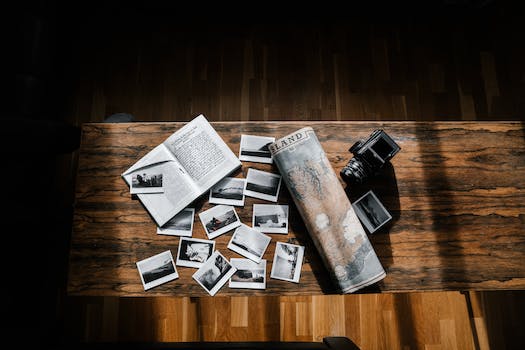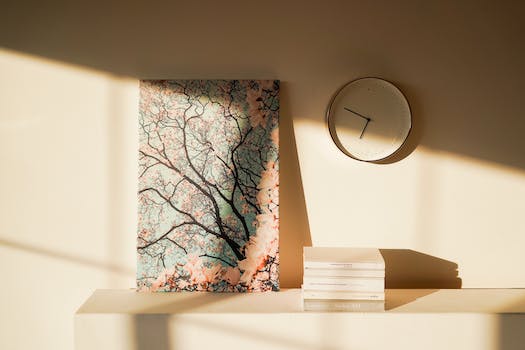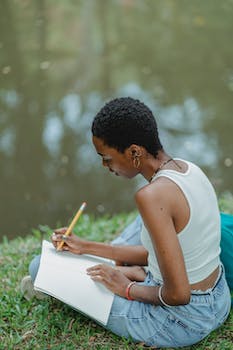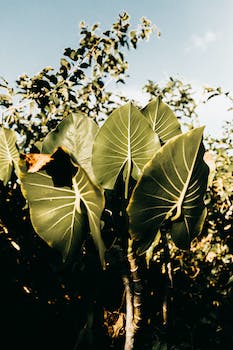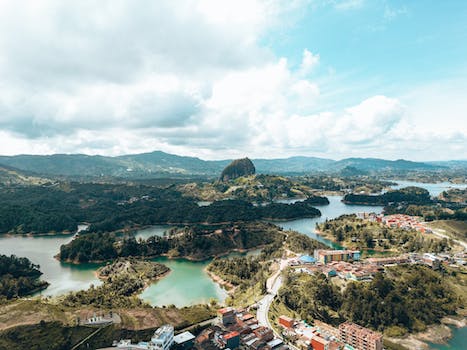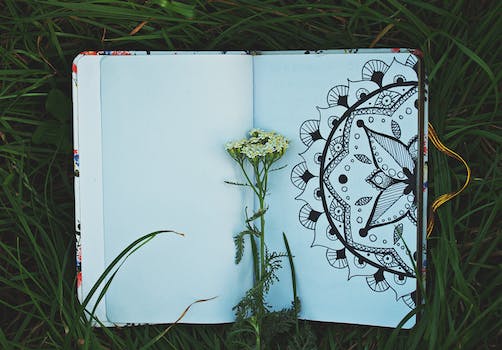

-
Table of Contents
Unleash your creative potential through discovering various painting techniques.
Introduction
Introduction:
Discovering Various Painting Techniques: Unleashing Your Creative Potential
Painting is a timeless art form that allows individuals to express their creativity and emotions on a canvas. Whether you are a beginner or an experienced artist, exploring different painting techniques can help you unlock your full creative potential. By experimenting with various methods, materials, and styles, you can discover new ways to bring your artistic visions to life. In this article, we will delve into the world of painting techniques, providing you with insights and inspiration to expand your artistic horizons. So, let's embark on this journey of discovery and unleash your creative potential through the exploration of various painting techniques.
Exploring Acrylic Pouring: A Guide to Creating Mesmerizing Abstract Art
Acrylic pouring is a fascinating painting technique that has gained popularity in recent years. It allows artists to create mesmerizing abstract art by pouring and manipulating acrylic paint on a canvas. This guide will take you through the process of acrylic pouring, from the materials you need to the step-by-step instructions.
To begin with, you will need a few essential materials for acrylic pouring. These include acrylic paint in various colors, a pouring medium, a canvas or other painting surface, and some tools for manipulating the paint, such as a palette knife or a straw. The pouring medium is crucial as it helps to thin the paint and create the desired consistency for pouring.
Once you have gathered all the necessary materials, it's time to prepare your workspace. Lay down a plastic sheet or some old newspapers to protect your working surface from any paint spills. Place your canvas on top of the protective layer and make sure it is level and secure.
Now, it's time to mix your paint. Start by pouring equal parts of acrylic paint and pouring medium into separate cups. You can mix different colors together to create unique combinations. Stir the mixture gently until the paint and pouring medium are well combined. If the consistency is too thick, add a little more pouring medium until you achieve a smooth, flowing consistency.
With your paint mixed and ready, it's time to start pouring. There are several techniques you can use to create different effects. One popular method is the "dirty pour," where you pour multiple colors of paint into one cup and then pour it onto the canvas in one continuous motion. This creates beautiful swirls and blends of colors.
Another technique is the "flip cup" method. In this technique, you pour each color of paint into a separate cup and then stack the cups on top of each other. Carefully flip the cups onto the canvas and let the paint flow out. This method allows for more control over the placement of colors and creates interesting patterns.
Once you have poured the paint onto the canvas, it's time to manipulate it. You can use a palette knife or a straw to move the paint around and create different effects. Tilt the canvas in different directions to let the paint flow and blend naturally. Experiment with different techniques and tools to see what works best for you.
After you are satisfied with the composition of your painting, let it dry completely. This can take anywhere from a few hours to a few days, depending on the thickness of the paint and the humidity in your environment. Once the painting is dry, you can add any finishing touches or varnish it to protect the surface.
Acrylic pouring is a versatile and exciting painting technique that allows artists to unleash their creativity and create mesmerizing abstract art. With the right materials and a little practice, you can create stunning pieces that are sure to captivate viewers. So, grab your paint and pouring medium, and let your imagination run wild with acrylic pouring!
Mastering Watercolor Techniques: Tips and Tricks for Achieving Stunning Results
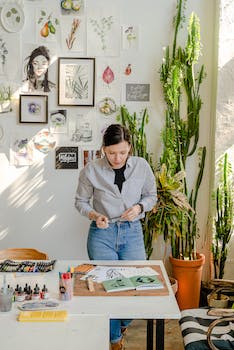
Watercolor painting is a versatile and beautiful art form that allows artists to create stunning and vibrant works of art. Mastering watercolor techniques can be a challenging but rewarding process that unleashes your creative potential. In this section, we will explore some tips and tricks for achieving stunning results with watercolor.
One of the first things to consider when working with watercolor is the type of paper you use. It is important to choose a high-quality watercolor paper that is specifically designed for this medium. The texture and weight of the paper can greatly affect the outcome of your painting. Rough or cold-pressed paper is ideal for creating texture and adding depth to your work, while hot-pressed paper is smoother and better suited for detailed and precise paintings.
Another important aspect of watercolor painting is the type of brushes you use. There are various types of brushes available, each with its own unique qualities. Sable brushes are known for their softness and ability to hold a large amount of water, making them ideal for creating smooth washes and blending colors. Synthetic brushes, on the other hand, are more affordable and can be a good option for beginners. Experimenting with different brush sizes and shapes will allow you to achieve different effects and textures in your paintings.
When it comes to applying the paint, it is important to understand the concept of wet-on-wet and wet-on-dry techniques. Wet-on-wet involves applying paint to a wet surface, which allows the colors to blend and create soft and flowing effects. This technique is great for creating backgrounds or adding depth to your paintings. Wet-on-dry, on the other hand, involves applying paint to a dry surface, which allows for more control and precision. This technique is ideal for adding details and fine lines to your work.
Layering is another important technique in watercolor painting. By layering washes of transparent colors, you can create depth and richness in your paintings. Start with lighter colors and gradually build up to darker shades, allowing each layer to dry before adding the next. This technique adds dimension and complexity to your work, making it more visually appealing.
One of the challenges of watercolor painting is controlling the flow of the paint. To achieve more control, you can use masking fluid to protect certain areas of your painting from being painted over. This allows you to create crisp and clean edges. Additionally, using a spray bottle filled with water, you can create interesting textures and patterns by spraying water onto the wet paint.
Lastly, practice and experimentation are key to mastering watercolor techniques. Don't be afraid to make mistakes and try new things. By exploring different techniques and approaches, you will discover your own unique style and unleash your creative potential.
In conclusion, mastering watercolor techniques requires patience, practice, and a willingness to experiment. By choosing the right paper and brushes, understanding wet-on-wet and wet-on-dry techniques, layering colors, and using masking fluid and water sprays, you can achieve stunning results in your watercolor paintings. So, grab your brushes, unleash your creativity, and dive into the world of watercolor painting.
Delving into Mixed Media: Combining Different Painting Techniques for Unique Artworks
Delving into Mixed Media: Combining Different Painting Techniques for Unique Artworks
When it comes to painting, there are countless techniques and styles to explore. From traditional oil painting to contemporary abstract art, the possibilities are endless. One exciting avenue to explore is mixed media, which involves combining different painting techniques to create unique and visually captivating artworks. By blending various mediums and approaches, artists can unleash their creative potential and produce stunning pieces that stand out from the crowd.
Mixed media is a versatile and dynamic form of art that allows artists to experiment with different materials and techniques. It involves combining traditional painting methods with unconventional elements such as collage, found objects, and even digital media. This fusion of different mediums adds depth, texture, and visual interest to the artwork, making it more engaging and thought-provoking.
One popular technique in mixed media is the use of collage. Artists can incorporate various materials, such as newspaper clippings, fabric, or photographs, into their paintings. By layering these elements onto the canvas, they can create a multidimensional effect that adds depth and complexity to the artwork. Collage allows artists to tell a story or convey a specific message through the combination of different visual elements.
Another technique commonly used in mixed media is the incorporation of found objects. Artists can incorporate everyday objects, such as buttons, feathers, or even pieces of broken glass, into their paintings. By repurposing these objects and giving them new meaning within the artwork, artists can create a sense of intrigue and surprise for the viewer. This technique adds a tactile element to the artwork, inviting the viewer to explore and interact with the piece on a deeper level.
Digital media has also become an integral part of mixed media art. Artists can incorporate digital images, graphics, or even video into their paintings. This integration of technology into traditional painting techniques opens up a whole new world of possibilities. Artists can experiment with different digital effects, manipulate images, or even create interactive elements within their artwork. This fusion of traditional and digital media creates a visually striking and contemporary aesthetic that pushes the boundaries of traditional painting.
One of the advantages of mixed media is the freedom it offers artists to explore and experiment. By combining different techniques and materials, artists can break free from the constraints of traditional painting and create truly unique and innovative artworks. This freedom allows artists to express their creativity and individuality, resulting in artworks that are personal and meaningful.
In conclusion, delving into mixed media is an exciting and rewarding journey for any artist. By combining different painting techniques, such as collage, found objects, and digital media, artists can create visually captivating and thought-provoking artworks. The fusion of different mediums adds depth, texture, and visual interest to the artwork, making it stand out from the crowd. Mixed media allows artists to unleash their creative potential and produce unique pieces that push the boundaries of traditional painting. So, if you're looking to explore new artistic horizons and unleash your creative potential, why not delve into mixed media and see where it takes you?
Q&A
1. What are some common painting techniques used by artists?
Some common painting techniques used by artists include blending, glazing, dry brushing, impasto, and sgraffito.
2. How can blending be used as a painting technique?
Blending involves smoothly merging different colors or tones together to create a gradual transition or softening of edges in a painting.
3. What is impasto and how is it used in painting?
Impasto is a technique where thick layers of paint are applied to the canvas, creating a textured surface. It adds depth and dimension to the artwork.
Conclusion
In conclusion, discovering various painting techniques can be a transformative experience that allows individuals to unleash their creative potential. By exploring different methods, artists can expand their skills, express their unique vision, and create captivating artworks. Whether it's experimenting with brushwork, color mixing, or texture application, the journey of discovering painting techniques opens up new possibilities and fosters personal growth in the realm of art.

